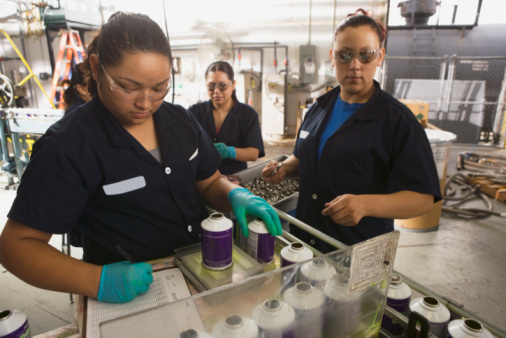Pregnant individuals who work in factories may be exposed to toxic chemicals on a daily basis. These chemicals can damage an unborn child. Such was the case for Julie Anderson, a woman who worked at a plant that manufactured paint. Seattle’s online daily newspaper, SeattlePI, reports that Anderson only discovered the damage done to her child years after he was born.

Anderson’s son showed signs of birth defects in his toddler years. Genetic tests later showed that the damage likely came from exposure to solvents during his time in her womb. According to the March of Dimes, “Women who were exposed to solvents on the job during their first trimester of pregnancy were 13 times more likely than unexposed women to have a baby with a major birth defect.”
Anderson filed suit against her employer, AkzoNobel, submitting medical evidence to back up her claim. The court ruled that her evidence was insufficient to pursue her case and dismissed the lawsuit. On appeal, however, the Washington State Supreme Court overturned that dismissal, stating the jury should have a chance to review the evidence, not just a judge.
Changing Rules of Evidence
Previously, courts relied on the “Frye Test,” which required medical opinions to be in keeping with accepted principles within the expert community. Therefore, any opinions contrary to the established belief would be disallowed. The new ruling allows medical testimony as long as the reporting physicians use “scientifically sound” research and evidence. This evidence can oppose the accepted view in the medical community.
AkzoNobel argues that the ruling invites “junk science” into the courtroom because the state has not yet sorted out new guidelines for what constitutes “scientifically sound” evidence. The company further maintains that Anderson knew the risks while she was pregnant and that her son’s condition was no one’s fault but her own. The company points out that all products come with warning labels. If she had read the labels, she would have known about potential brain damage and health hazards to her unborn son.
New Ruling Helps Many Victims
The court’s decision will affect other cases where medical testimony previously failed to meet the standards imposed by courts. One case in particular demonstrates why the new ruling is fair and just.
Rebecca La Monte suffered from fibromyalgia caused by a car crash. She struggles to get out of bed each day and has difficulty sleeping because of the chronic pain her condition causes. Because fibromyalgia is a disease about which little is known, there is no concrete test for the condition. Diagnosis is made based on a patient’s symptoms. Now, she can present her medical records and expert medical opinions to a jury who can decide if the evidence is enough to grant her case.
Contact Us
If you or someone you love has been injured, contact our office. There is a limited window to file a claim, so do not wait. We will provide you with a free consultation and work to secure the compensation you rightly deserve.


